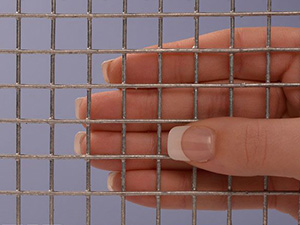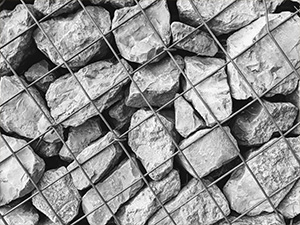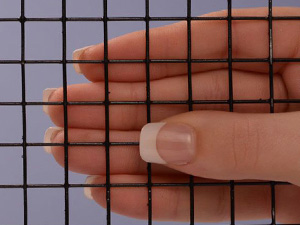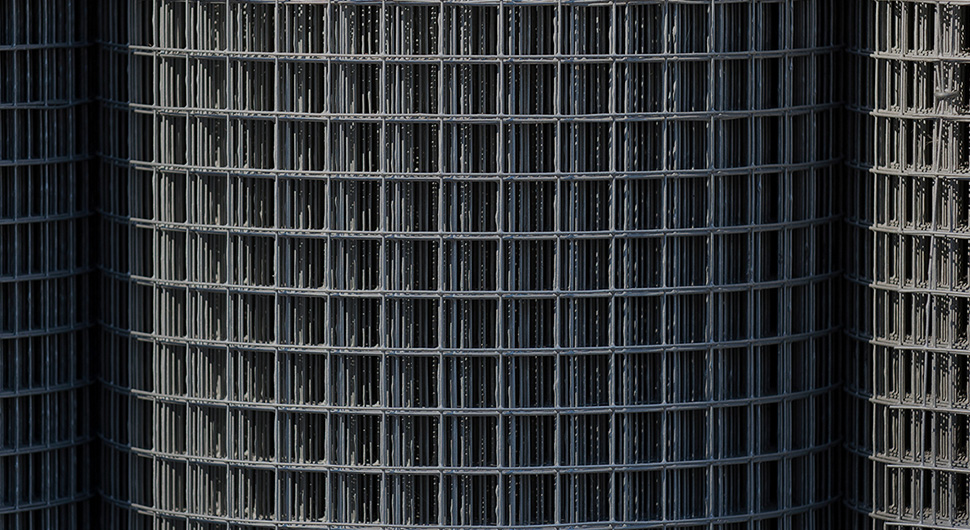Galvanized stainless steel is an incredibly durable and resistant material. Pipes, nails, beams, plates, bars, rods, and other industrial products are often galvanized to ensure decades of strength and corrosion prevention.
Wire mesh plays a critical role in thousands of commercial and industrial applications. Galvanized screens, in particular, provide a lot of value, as they're adaptable, long-lasting, and reasonably priced.
The Process of Making Galvanized Wire Mesh
 A thick, robust outer layer of zinc is what makes galvanized hardware cloth so strong and resilient. How does it acquire this coating? It can be done in a couple of ways: hot-dipping and electrogalvanizing. Each process is outlined below.
A thick, robust outer layer of zinc is what makes galvanized hardware cloth so strong and resilient. How does it acquire this coating? It can be done in a couple of ways: hot-dipping and electrogalvanizing. Each process is outlined below.
Hot-Dipping
1. The stainless steel is cleaned with a sodium hydroxide solution to remove dirt, debris, oil, and other residues.
2. An acidic solution is then used to remove any mill scale, rust, contaminants, and other surface impurities.
3. A zinc ammonium chloride cleaning agent (also known as a "flux") is applied to the surface to prevent oxidation. This solution remains on the steel, as it helps the zinc stick.
4. Next, the stainless steel is dipped into a vat of molten zinc (which has been liquified at an extremely high temperature).
5. The steel remains in the vat until it reaches the same temperature as the hot zinc.
6. After being removed from the vat, the stainless steel is rapidly cooled in a special tank.
Hot-dip galvanizing creates a physical and chemical bond between the steel and the zinc. This is what's called a zinc-steel alloy.
Electrogalvanizing
Unlike hot-dipping, electrogalvanizing (or electrolytic galvanizing) is a cold process. Zinc particles are used to create an organic solvent, which is applied to the steel surface.
This causes a reaction between the substances, resulting in a zinc-steel alloy. When the solvent evaporates, the zinc remains on the metal. Electrogalvanizing generally leaves a thinner zinc layer than the hot-dipping method.
Spangle
When larger pieces of steel are galvanized, the zinc coating can often be seen with the naked eye. This is what's called "spangle," which has a crystalized, snowflake-like appearance. The crystallites are present with wire mesh screens, but they're usually too small to see.
Galvanizing Before vs. After Manufacturing Mesh
Stainless steel can be galvanized either before or after it's fabricated into wire mesh. When galvanizing occurs first, the metal is drawn down the desired diameter. The individual metal wires are coated with zinc and then woven or welded into screens. Welding can burn the zinc layer off at the joints, in which case it may need to be galvanized again.
When fabrication comes first, pre-woven steel products are dipped into molten zinc or coated with a solvent. This is usually the more costly option, particularly if mesh products are custom ordered and then galvanized. However, it ensures the mesh screens retain their protective coating.
Industrial Uses for Galvanized Mesh
 What is wire mesh used for after it's galvanized? Due to its notable durability and corrosion-resistance, the material is an important component of many industrial applications.
What is wire mesh used for after it's galvanized? Due to its notable durability and corrosion-resistance, the material is an important component of many industrial applications.
Galvanized stainless steel screens are used for:
- Agriculture and farming
- Archaeology
- Fencing, enclosures, and safety
- Gardening, greenhouses, and landscaping
- Gutter guards, soffit screens, and foundation vents
- HVAC applications
- Particle
- Pest-control
- Retention walls
- Roofing, ceilings, infill panels, drywall, and insulation
Galvanized hardware cloth is technically a type of stainless steel mesh. However, the material is often given its own category, as it has distinct features and advantages.
Galvanized Wire Screens and Mesh Products from TWP Inc.
 TWP Inc. has been a leading supplier of wire mesh materials for over 50 years. Our women-owned company holds a certification from the International Organization for Standardization (ISO), which requires us to adhere to the highest standards in the industry.
TWP Inc. has been a leading supplier of wire mesh materials for over 50 years. Our women-owned company holds a certification from the International Organization for Standardization (ISO), which requires us to adhere to the highest standards in the industry.
We're proud to offer a broad range of stainless steel mesh materials, including galvanized, welded, poly-coated, and sintered. TWP Inc. carries industrial-grade hardware cloth in many shapes, sizes, weaves, wire diameters, opening sizes, and finishes.
We also offer a range of services, including slitting, disc sizing, and laser cutting. Additionally, TWP Inc. can accommodate custom sizes, shapes, and quantities. Order yours today.
Connect with us on LinkedIn for the latest news and insights into how metal mesh products are being used in your industry.




 What is wire mesh used for after it's galvanized? Due to its notable durability and corrosion-resistance, the material is an important component of many industrial applications.
What is wire mesh used for after it's galvanized? Due to its notable durability and corrosion-resistance, the material is an important component of many industrial applications.